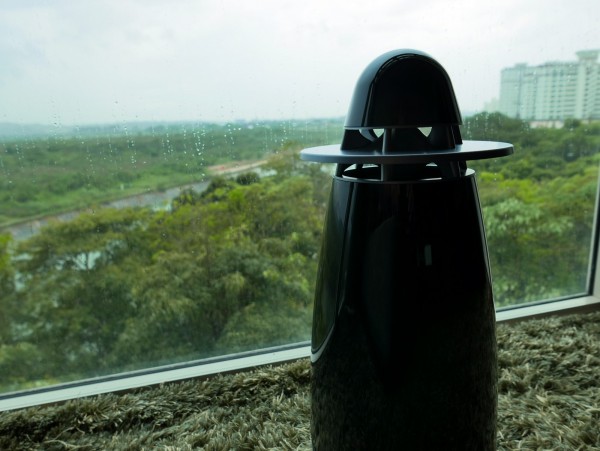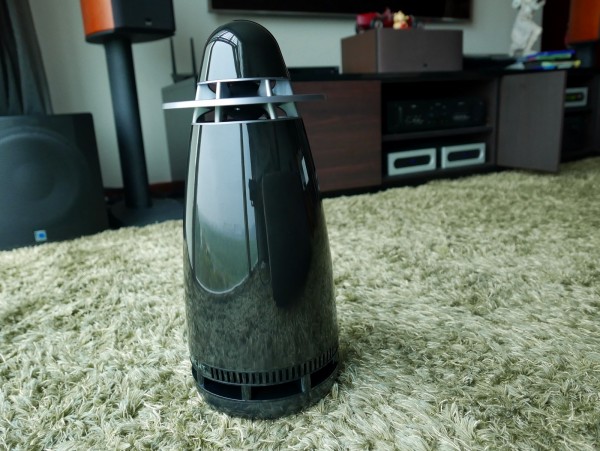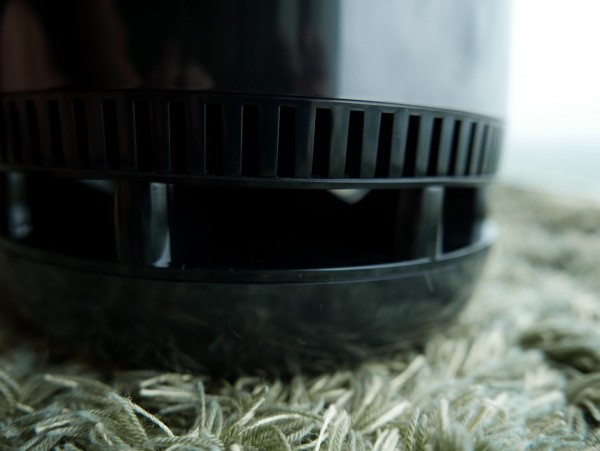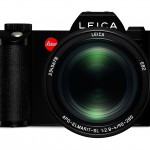
The Archt One needs little introduction if you have followed the omni-directional speaker’s Kickstarter campaign last year.
It’s one of the success stories for the crowdfunding programme, with real, well-made speakers delivered to backers and now customers around the world.
Taking the Archt One out of its box the first time, you don’t get the sense that this was only made possible by backing from the public.
The Singapore-designed speaker looks the part, certainly with its high-gloss shiny finish and handy touch controls at the top for easy access.
The packaging is fine too. For a “luxury goods” price of S$999, you get a cloth bag to hold the speaker and prevent scratches. The out-of-box experience is one that reminds you of a pair of hi-fi speakers.
Except the Archt One isn’t stereo. As a standalone speaker, it promises omni-directional sound. That is, you don’t have to worry where to place it in a room.
But first, the setup. This added to the great first impressions I had. To get music playing on the Archt One, I only had to pair it via Bluetooth with my Samsung Galaxy Note 4 smartphone and stream my songs or fire up Spotify.
Alternatively, you can use AirPlay for Apple devices or plug in an audio cable to a music player. Wireless streaming is the obvious choice since you can easily control the playback from your mobile device.

The first songs I played on the Archt One surprised me. This was a speaker that was aimed at lifestyle-conscious users, but it certainly delivered the goods when it came to above-average audio quality.
The 80mm main speaker and 120mm woofer are no-nonsense, bringing across a clear and unfettered mid-range and packing enough in the low-end. I didn’t detect much distortion from what was essentially a plastic speaker cabinet, despite playing at room-filling volumes.
In my living room, where I usually play back music with two bookshelf speakers, the Archt One immediately impressed with its steady, unhurried delivery.
Impressive too was the separation of the various components of a track. The vocals and various instruments in a track were clearly distinct. If you concentrate on vocals most of the time, like the Faye Wong and Stacey Kent tracks I tried out, the Archt One would delight you.

The bass on the small speaker was a nice surprise as well. For its size, the Archt One did very well in reaching the depths on a variety of tracks you might throw at it.
Clearly, it didn’t lack slam. I played back the Inception movie soundtrack and it produced the speed and impact you’d expect. What it lacked perhaps was a bit more control.
Despite performing admirably, the Archt One won’t beat a well-made pair of bookshelf speakers or floorstanders, for sure. I’m not a fan of two hours of heavy bass tracks because they can get tiresome with most speakers that don’t hold on to the lows well enough.
What I’m also not sure of is the omni-directional audio. The Archt One fares pretty well if you have it playing background audio but if you listen a little intently, you’ll realise the illusion of a live performance isn’t there.
Playing back the The Eagles’ Hotel California track from its Hell Freezes Over album, you should hear the various guitars and percussion pieces clearly placed on a stage (see video). With the Archt One, you hear all of them in one spot, near to the speaker itself.

And I tested this after I had configured the speaker with a downloadable app. The sound may have been less “stuck” to the speaker after the room calibration but it wasn’t more realistic or three-dimensional.
If you want a setup that’s engaging and lets you relive a live recording, a more conventional stereo setup is still the way to go.
Interestingly, for a speaker that is supposed to offer 360-degree audio, its manufacturer also suggests a stereo setup, with two Archt Ones in a room for improved imaging.
The company probably realises that there’s no fooling folks who listen carefully. Question is, how often do you do that? For many casual listeners – not your anxious audiophile – the performance of a single Archt One might probably sound fine.

One suggestion I’d have for Archt is to tell users about the smartphone app they can download for room calibration. It’s easy to use, but the quick-start guide in the box doesn’t seem to have information on it.
That’s a small blip, to be fair, in a generally well-made speaker. The Archt One looks good and has an easy-to-use interface, along with better-than-usual sound quality for its class.
I’d recommend it over many a pretty but lousy-sounding speaker I’ve heard, if only its price was lower. At S$999, the Archt One is getting close to the region of hi-fi setups which may offer better audio quality. Price it a little lower and it’d be more attractive.






